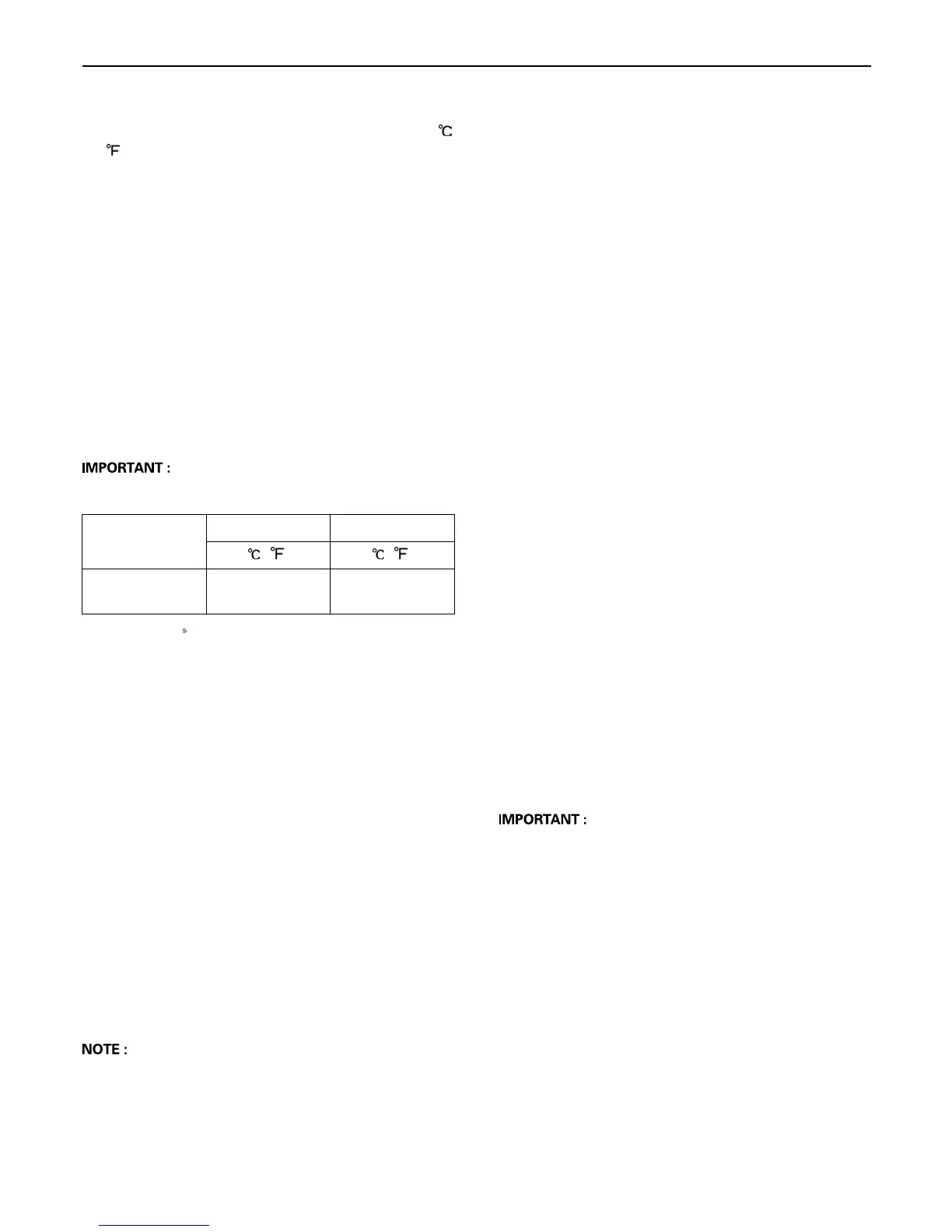49PERIODIC SERVICE
If it freezes, coolant can damage the cylinders and
radiator. If the ambient temperature falls below 0
(32 ) or before a long-term storage, let out cooling water
completely, or mix fresh water with long-life coolant and fill
the radiator and reserve tank with the mixture.
1. Long-life coolant (hereafter LLC) comes in several
types. Use ethylene glycol (EG) type for this engine.
2. Before employing LLC-mixed cooling water, fill the
radiator with fresh water and empty it again. Repeat
this procedure 2 or 3 times to clean up the inside.
3. Mixing the LLC
Put the LLC in cooling water in the percentage (%) for
a target temperature. When mixing, stir it up well, and
then fill into the radiator.
4. The procedure for the mixing of water and anti-freeze
differs according to the make of the anti-freeze and the
ambient temperature. Refer to SAE J1034 standard,
more specifically also to SAE J814c.
A When the anti-freeze is mixed with water, the anti-
freeze mixing ratio must be less than 50%.
5. Adding the LLC
(1) Add only water if the mixture reduces in amount
by evaporation.
(2) If there is a mixture leak, add the LLC of the same
manufacturer and type in the same mixture
percentage.
*Never add any long-life coolant of different
manufacturer. (Different brands may have
different additive components, and the engine
may fail to perform as specified.)
6. When the LLC is mixed, do not employ any radiator
cleaning agent. The LLC contains anti-corrosive
agent. If mixed with the cleaning agent, sludge may
build up, adversely affecting the engine parts.
7. Kubota's genuine long-life coolant has a service life of
2 years. Be sure to change the coolant every 2 years.
A The above data represent industry standards that
necessitate a minimum glycol content in the
concentrated anti-freeze.
A When the coolant level drops due to evaporation, add
water only to keep the anti-freeze mixing ratio less
than 50%. In case of leakage, add anti-freeze and
water in the specified mixing ratio before filling in to the
radiator.
EVERY 2 YEARS
BReplacing Hydraulic Hose
Replace hoses and hose clamps every 2 years or earlier
if checked and found that hoses are swollen, hardened or
cracked.
BReplacing Fuel Lines
This should be done by your local KUBOTA Dealer.
BReplacing Radiator Hose
Replace hoses and clamp bands every 2 years or earlier
if checked and found that hoses are swollen, hardened or
cracked.
BReplacing Intake Air Line
(See "Checking Intake Air Line" in every 200 hours
maintenance.)
SERVICE AS REQUIRED
BReplacing Fuses
The machine electrical system is protected from potential
damage by fuses.
A blown fuse indicates that there is an overload or short
somewhere in the electrical system.
If any of the fuses should blow, replace with a new one of
the same capacity.
A Before replacing a blown fuse, determine why the fuse
blew and make any necessary repairs. Failure to
follow this procedure may result in serious damage to
the machine electrical system. Refer to the
"TROUBLESHOOTING" section of this manual or your
local KUBOTA Dealer for specific information dealing
with electrical problems.
If any of them should blow, replace with a new one of
the same capacity.
Do not use the fuse except indicated capacity.
Vol%
Anti-freeze
Freezing Point Boiling Point *
() ()
40
50
-24 (-12)
-37 (-34)
106 (222)
108 (226)
*
At 1.013X10 Pa (760mmHg) pressure (atmospheric).
A higher boiling point is obtained by using a radiator
pressure cap which permits the development of
pressure within the cooling system.
